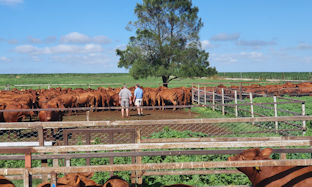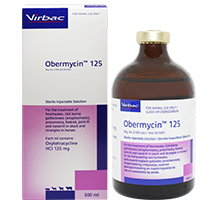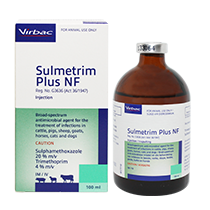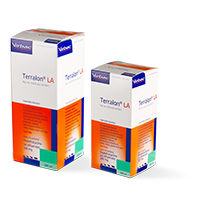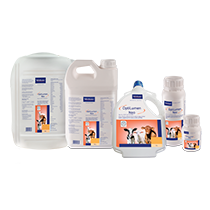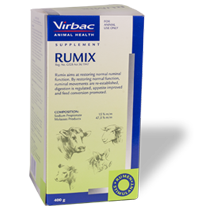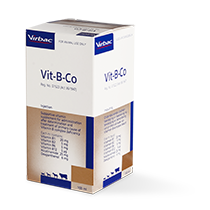
Diarrhoea in young calves
Diarrhoea or calf scour can be a major cause of poor growth and calf mortality.
The incidence and severity of a disease is highly dependent upon the level of colostral protection that a calf receives within the first six hours of life. It is generally recommended that calves receive three litres within the first two hours of life.
If calf diarrhoea, joint infections, meningitis, and septicaemia have become a problem in young calves on your farm, it could prove worthwhile checking their immune status by means of a simple and inexpensive blood test (measurement of the total plasma-protein concentration) undertaken by your veterinary surgeon.
The most important causes of calf diarrhoea are viruses such as the rota- and corona-viruses and infections caused by Salmonella species (such as Salmonella dublin and Salmonella typhimurium). E. coli can be a major problem, as can Cryptosporidiosis in housed dairy calves.
Diagnosis:
For an accurate diagnosis, please consult your veterinarian.
Treatment:
-
Fluid therapy is the most effective treatment strategy.
-
Parenteral antibiotics should be used to control concurrent infections, e.g. navel ill and calf diphtheria.
-
As with all animal diseases, prevention is better than cure and an effective veterinary herd health plan is essential to maintain health and prevent costly diseases.
-
Vaccines are available against the most important infectious causes of calf diarrhoea, but a prevention strategy will only work if calves receive adequate volumes of good-quality colostrum within a few hours of birth.
-
Biosecurity
Rotavirus infection
Rotavirus infection is a common cause of diarrhoea in young dairy calves. Calves are most commonly affected at eight to 14 days of age when there is an acute onset of diarrhoea, with the passage of very watery yellow/green faeces. The infection might have been acquired from the calving accommodation and then spread between young calves in the calf house through direct contact. Typical early signs include a reluctance to stand and drink, mild depression, and salivation. The calf becomes dehydrated with sunken eyes and tight and inelastic skin; recumbency soon follows.
The diarrhoeic calf should be isolated in a dry, well-bedded pen. One to two litres of oral electrolyte should be administered four to eight times a day. Intravenous fluids administered by a veterinary surgeon are essential in dehydrated calves that are unable to stand unaided.
Parenteral antibiotics should be used to control concurrent infections, e.g. navel ill and calf diphtheria. The return to a milk diet should be a complete change and the milk should not be diluted with an electrolyte solution. Alternate milk and electrolyte solution should be fed every four hours.
Annual vaccination of the dam with a combined rotavirus, coronavirus and K99 vaccine will help prevent disease in the newborn calf following colostrum feeding for the first two weeks of life.
Since the protection of the calves depends on the physical presence of passively acquired antibodies within the gut, calves must receive adequate colostrum from their dams. Optimal results will be obtained if a whole-herd cow-vaccination policy is adopted. This will ensure that the level of infection and consequent virus excretion is kept to a minimum and, in this way, the overall level of disease challenge on the farm can be kept to a minimum.
Coronavirus diarrhoea
Outbreaks of calf coronavirus diarrhoea are similar to or more severe than those observed for rotavirus infection. Fortunately, coronavirus infection is much less common than rotavirus.
The treatment and prevention of coronavirus infection are as outlined above for rotavirus.
Enterotoxigenic E. coli
In calves, this term is used to refer to strains of the bacterium E. coli that possess the K99 antigen. The disease characteristically affects calves aged one to three days old when there is a sudden onset of profuse yellow/white diarrhoea causing rapid and severe dehydration. The calf quickly becomes recumbent. Accumulation of fluid in the abomasum and intestines gives the abdomen a bloated appearance. Disease would typically follow the introduction of the infection into the herd with contamination of the calving environment and infection of newborn calves or contaminated water sources.
Prevention of enterotoxigenic E. coli infection is as outlined above for rotavirus and coronavirus using a combined vaccine and ensuring passive antibody transfer in the colostrum.
Cryptosporidiosis
Infection can rapidly build up in group pens fed by automatic feeders where newborn calves are constantly added to the group.
Diarrhoea is caused by the physical loss of absorptive area of the small intestine and exacerbates the viral infections described above. There is profuse yellow/green diarrhoea with a lot of mucus in it. Dehydration is mild but the calf rapidly loses condition over two to five days and has a dull, tucked-up appearance. Morbidity is usually high, whilst the mortality rate in uncomplicated cases is usually low but otherwise also high, with secondary infections like E. coli playing a major part.
In uncomplicated cases, ensure that the scouring calf is properly hydrated and use oral electrolyte solutions as necessary. Please consult your local veterinarian for a suggested treatment protocol. Cryptosporidiosis is a zoonotic disease (can affect humans).
Salmonella
Salmonella species, such as Salmonella dublin and Salmonella typhimurium, can cause severe diarrhoea with the presence of blood and mucosal casts and may result in death. More often, Salmonella infections of young calves cause joint and bone infections and severe pneumonia which can prove very difficult to treat. The identification of Salmonella infections necessitates detailed veterinary investigation.
Prevention and control of calf diseases caused by certain Salmonella species can be achieved by appropriate vaccination of the dam through colostral transfer of protective antibodies.
Click here for more information on Sulmetrim Plus NF
To boost your newborn’s gut health use Optilumen Neo.
60092301HF

